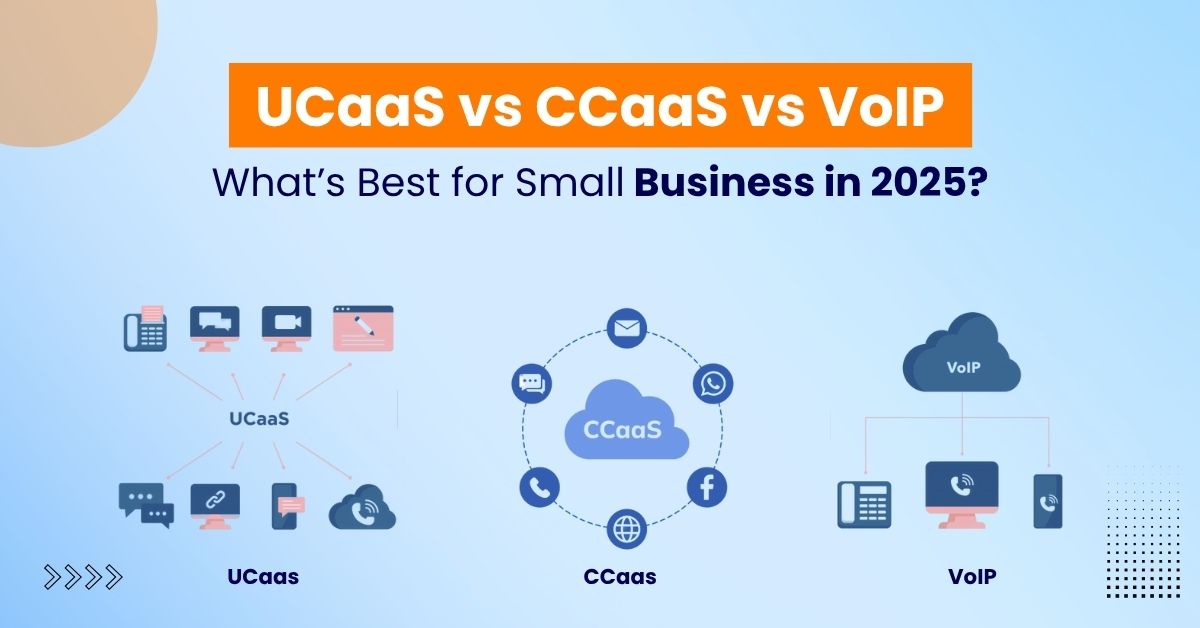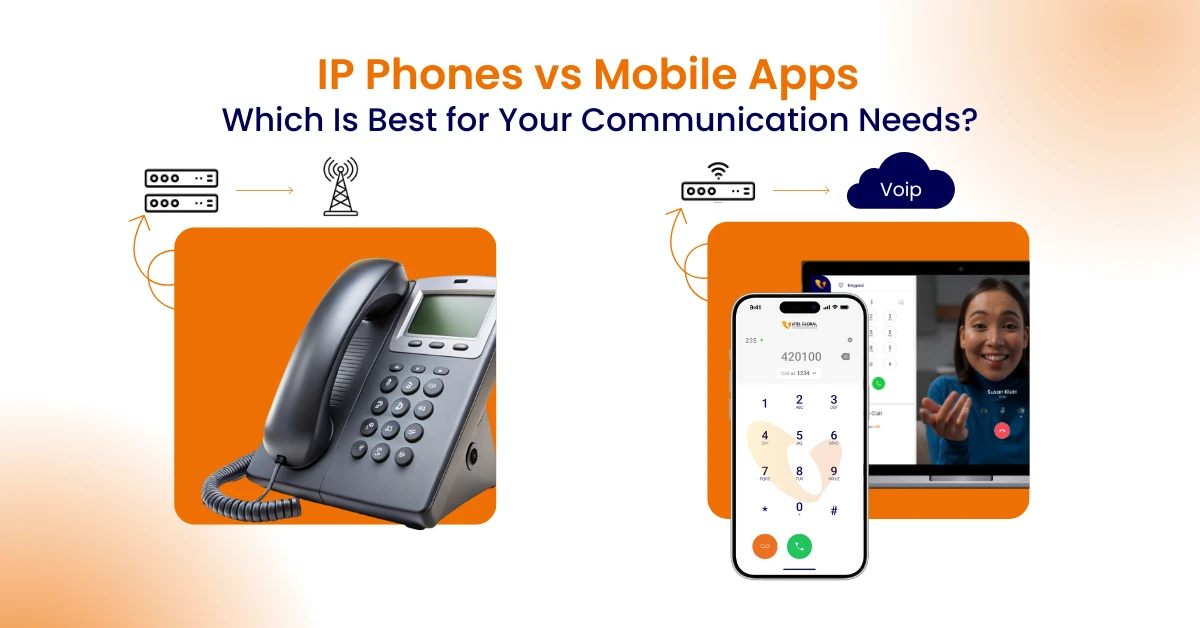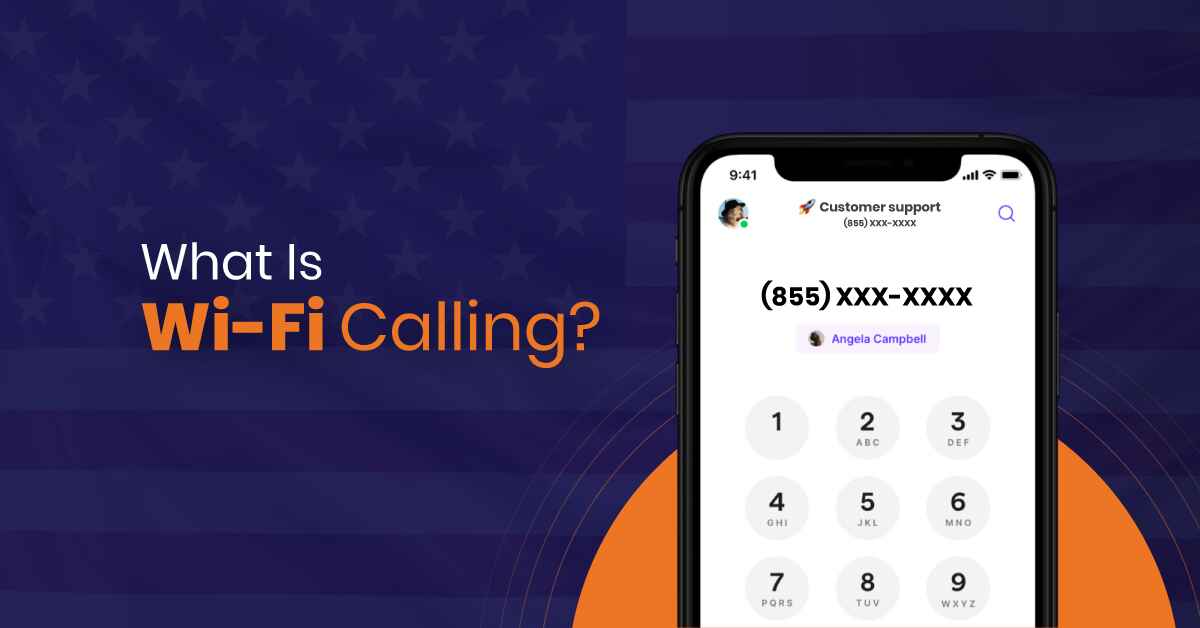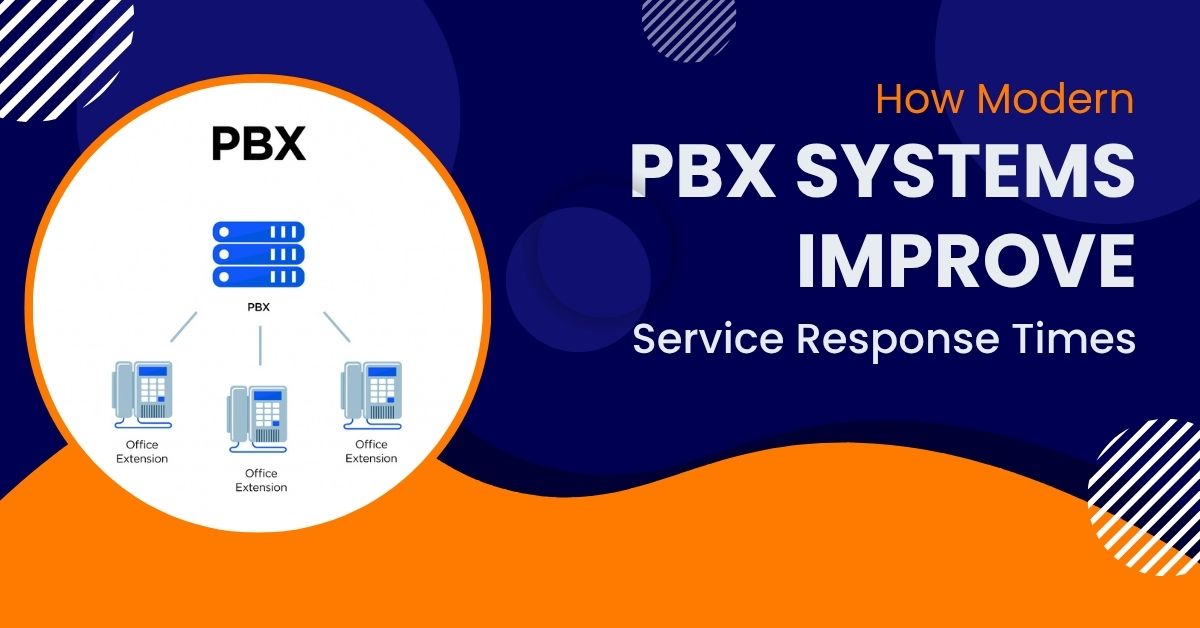UCaaS vs CCaaS vs VoIP: What’s Best for Small Business in 2025?

4 min read
Introduction
Choosing the right communication tools is very important for small businesses. In 2025, knowing the differences between UCaaS, CCaaS, and VoIP will help you pick the best one. The right platform can make teamwork easier, improve customer connections, and help your business grow. With the right solution, small businesses can simplify communications, cut down on repeated tasks, and use smart reports to improve.
What Are UCaaS, CCaaS, and VoIP?
-
UCaaS (Unified Communications as a Service): A cloud-based platform that brings together voice calls, instant messaging, video meetings, email, and team collaboration tools. It makes it easy for your team to talk and work together.
-
CCaaS (Contact Center as a Service): A cloud service that helps manage customer contacts across many channels like calls, chat, email, and social media. It helps your support team give great service.
-
VoIP (Voice over Internet Protocol): Technology that lets you make phone calls over the internet. Both UCaaS and CCaaS use VoIP for voice calls.
Comparison Table: UCaaS vs CCaaS vs VoIP
| Feature | UCaaS | CCaaS | VoIP |
| Main Purpose | Internal communication and team collaboration | Managing customer service and contact centers | Making voice calls over the internet |
| Communication Channels | Voice, messaging, video, email | Voice, chat, email, social media | Voice only |
| Users | Employees and internal teams | Customer support and sales teams | Anyone needing voice calls |
| Integrations | CRM, collaboration tools, AI features | CRM, AI analytics, contact center tools | Basic phone systems, sometimes integrated |
| AI Features | Call routing, voicemail transcription, real-time transcription, AI tools | AI-powered customer interactions, analytics, workflow automation | Limited or none |
| Scalability | Great for small to midsize businesses | Scales well for customer-facing teams | Suitable for basic voice needs |
| Benefits | Streamlined internal communication, better productivity, supports remote work | Better customer experience, multi-channel support, fewer missed calls | Cost-effective voice calling |
| Security & Compliance | Encryption, multi-factor authentication, GDPR, HIPAA, CCPA compliance | Same as UCaaS plus contact center-specific compliance | Basic security, depends on provider |
| Deployment | Cloud-based single platform | Cloud-based integrated contact center platform | Cloud or on-premises VoIP systems |
Benefits of UCaaS and CCaaS
Both UCaaS and CCaaS use cloud communications. This means less hardware to handle and easier control.
UCaaS Benefits
UCaaS gives you a single platform for all your internal communications. It combines voice calls, messaging, video, and email. Features like call routing, call recording, voicemail transcription, and AI tools help boost productivity. UCaaS supports remote and hybrid work. It keeps your team connected no matter where they are.
CCaaS Benefits
CCaaS offers contact center services across many channels — calls, chat, email, social media. It uses AI and real-time analytics to improve support, reduce missed calls, and automate workflows. It also connects with CRM systems to give fast, personal service.
Why Choose an Integrated Platform?
Many businesses like a unified communications platform that mixes UCaaS and CCaaS. This gives you:
-
One app for all your communications, inside and outside your company
-
Shared data and AI insights that help simplify workflows
-
Less manual work through automation
-
Easier vendor management with one provider
-
Cost savings and simpler support
The Importance of CRM Integration
Linking your communication platform with a CRM system is key. It gives sales and support teams live customer data. This helps them act fast, give personal service, and make customer experiences smooth. This leads to happier customers and stronger loyalty.
How Sales Teams Benefit
Sales teams get real-time customer info and AI insights to find the best leads. Call recordings help with training and quality checks. Easy communication tools let sales reps reach clients fast, boosting sales and service.
Enhancing Customer Experience with Contact Centers
Contact centers use AI to cut wait times and answer simple questions automatically. Offering many channels lets customers pick how they want to connect. Automated workflows keep service steady, making customers happier and more loyal.
Unified Communications Trends in 2025
Key trends shaping unified communications include:
-
Cloud-native UCaaS and CCaaS platforms that grow with your business
-
Generative artificial intelligence that automates tasks like real-time transcription, voicemail transcription, and follow-ups
-
Stronger security with encryption and multi-factor authentication
-
Advanced analytics and reporting that give insights to improve service and operations
Supporting Remote and Hybrid Workforces
With more remote and hybrid work, communication tools must work well. They should mix voice, video, chat, and collaboration features. They must work on any device from anywhere. This keeps internal communication and customer support strong.
Security and Compliance
Security is very important. Look for providers with full encryption, multi-factor login, strict access controls, and rules like GDPR, HIPAA, and CCPA. Regular security checks help keep your business and customers safe.
Additional Considerations for Small Businesses in 2025
When picking communication tools, think about your current needs and future growth. A flexible UCaaS or integrated platform with a single interface cuts missed messages and delays. Generative AI automates routine tasks. This lets your team focus on important work. Using one vendor for UCaaS and CCaaS makes management easier and support steady. Make sure your provider meets security rules and offers strong onboarding for a smooth start. These things help small businesses grow, improve customer experience, and use the latest technology in 2025 and beyond.
Conclusion
Choosing the right communication solution depends on your business needs:
-
UCaaS is best for internal communication and teamwork.
-
CCaaS focuses on great customer support and managing customer contacts.
-
VoIP offers cheap internet voice calls and supports both UCaaS and CCaaS.
Platforms that mix UCaaS and CCaaS give smooth workflows, better business results, and happier customers and employees.
Unify your business communication — get your free demo with Vitel Global today!
Frequently Asked Questions (FAQs)
1. What’s the difference between UCaaS, CCaaS, and VoIP?
UCaaS combines internal tools like voice calls, messaging, video, and email for teamwork. CCaaS manages customer contacts across calls, chat, email, and social media to improve support. VoIP is the technology that makes voice calls over the internet and supports both UCaaS and CCaaS.
2. Which is best for small businesses in 2025?
It depends on your needs. UCaaS works well for internal communication and remote teams. CCaaS fits businesses focused on customer service across many channels. Many use platforms that mix both for smooth communication.
3. Can UCaaS and CCaaS be on one platform?
Yes. Integrated platforms let you handle both internal and customer communication in one place. This makes workflows easier and vendor management simpler with one provider.
4. How does VoIP support unified communications?
VoIP makes voice calls over the internet, replacing old phone lines. It supports UCaaS and CCaaS for remote and hybrid work.
5. What role does AI play?
AI automates tasks like call transcription and follow-ups. It improves call routing and makes customer experiences faster and more personal.
6. How important is CRM integration?
Very important. It gives live customer data to sales and support teams for fast, personal service and smooth interactions.
7. Are cloud-based solutions reliable for remote work?
Yes. They offer reliable, scalable, and secure communication for remote and hybrid teams.
8. What security features should I look for?
Look for strong encryption, multi-factor authentication, strict access controls, and rules like GDPR, HIPAA, and CCPA.
9. How do these solutions improve business performance?
They unify communication channels, automate tasks, and give analytics. This boosts productivity, cuts missed calls, and improves customer interactions.
10. Can small businesses switch between these solutions as they grow?
Yes. Many providers offer scalable solutions that grow with your business. This avoids costly changes.
Published: October 29th, 2025
Subscribe to Our Latest Updates
Get monthly product and feature updates, the latest industry news, and more!








